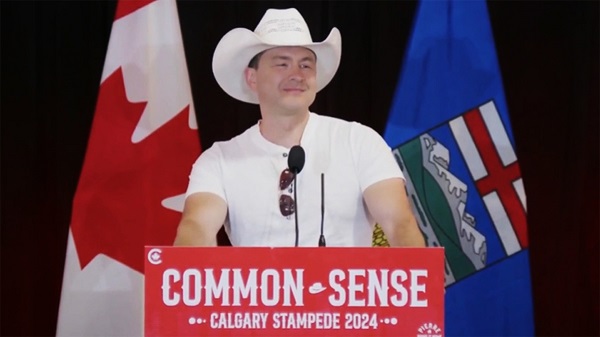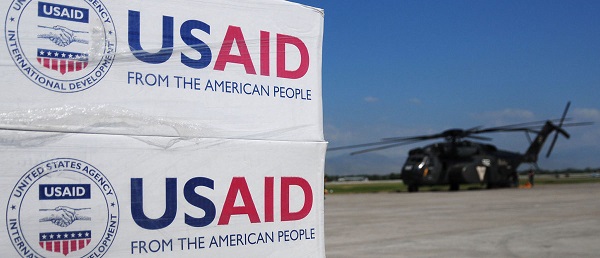Business
Argentina’s First Budget Surplus in 123 Years

Argentina has posted its first budget surplus in 123 after President Javir Milei took office and demanded an abrupt halt to government spending. Governments worldwide should carefully take note.
Milei proudly announced:
“The deficit was the root of all our evils — without it, there’s no debt, no emission, no inflation. Today, we have a sustained fiscal surplus, free of default, for the first time in 123 years. This historic achievement came from the greatest adjustment in history and reducing monetary emission to zero. A year ago, a degenerate printed 13% of GDP to win an election, fueling inflation. Today, monetary emission is a thing of the past.”
Economic emissions should become a coined phrase as it is far more harmful than anything government is currently trying to conquer.
Argentina was forced to stop printing money back in 2022 after inflation surpassed 60% in July of that year, and their currency became utterly worthless. The central bank raised rates to nearly 70% to no avail as government continued borrowing. The problem with socialism is that they eventually run out of other people’s money. The government was spending over $6 million daily on social programs, but the poverty rate continued to rise, and around 57% of the working population could not find jobs. There were mass strikes since their money could not fund basic goods. Even if they could find employment, what incentive would the people have when the currency is worthless? Since they had no way to pay off their debt, the government simply continued to print more and devalued its own currency in the process.
Javir Milei was called a right-wing extremist for denouncing socialism and promising to curtail government spending and social programs. He understood that socialism COULD NOT WORK. It took President Javier Milei of Argentina a mere two months to push his nation into a surplus. The Economy Ministry declared that the government posted a $589 million surplus back in April, the first surplus in a decade. Milei referred to the government as “a criminal organization,” and recognized that the public sector needed to shrink as 341,477 people were on the government payroll when he took office.
Referred to as the “gnocchi” after the Italian pasta dish that is commonly served on the 29th of the month, the same day as payday, are the individuals in Argentina on the government payroll who do absolutely nothing. They were installed by politicians in exchange for favors. Critics claim he is firing at random, but the Milei Administration has assured the public that selecting those who will be laid off will be an “extremely surgical task, done so as not to make mistakes.”
Milei has already eliminated useless agencies such as the Ministry of Culture, Ministry of Health, Ministry of Labor, and Ministry of Social Development. In his words, Argentina is currently a poor country and cannot afford these departments that do absolutely nothing to improve the nation’s economic conditions. He has cut the Cabinet in half and no one has noticed a difference.
Milei removed price controls and devalued the currency by 54%. Transport and fuel subsidies were eliminated. It was noted that these measures would at first hurt PPP before the economy could begin to heal. Imagine inflation cooling in February at 276% — the situation was dire. The International Monetary Fund awarded Argentina a $44 billion credit program. The nation is beginning to stabilize very slowly, and it took decades of deteriorating economic conditions for someone to come in and clean house.
He has called his measures a form of “shock therapy” for Argentina’s economy. Milei agreed to devalue the nation’s peso from around 350 to 800 pesos per USD. He has eliminated quotas on imports and exports and removed the licensing that was difficult to obtain. There is a temporary rise in taxes for non-agricultural trade that brings it on par with industry standards. Transportation and energy subsidies have been eliminated.
Milei is the same man who stood before the crowd at Davos and criticized their glorification of socialism. “The main leaders of the Western world have abandoned the model of freedom for different versions of what we call collectivism,” Milei said to a hostile crowd at Davos. “We’re here to tell you that collectivist experiments are never the solution to the problems that afflict the citizens of the world—rather they are the root cause.”
Those in charge want us to believe that capitalism equates to greed while collectivism is seen as a form of social justice but, of course, requires the money of others. Free enterprise is under constant attack, and Milei is one of the only world leaders fighting for its existence. “Social justice is not just. It doesn’t contribute to the general well-being,” Milei said to Davos, citing that socialism is “intrinsically unfair” and forces the state to attack the people for taxes. “Can any of us say that they voluntarily pay taxes?” he asked the crowd.
He was once called the Donald Trump of Argentina. We can hope that Donald Trump will take swift action to reduce government spending. DOGE appointee Elon Musk congratulated Argentina’s president when news of the budget surplus broke. Unfortunately, America is too far in the hole to recover by slashing programs or cutting government. It would be a massive step forward but our deficit has been permitted to run wild for too long to be tamed.
Business
Trump confirms 35% tariff on Canada, warns more could come
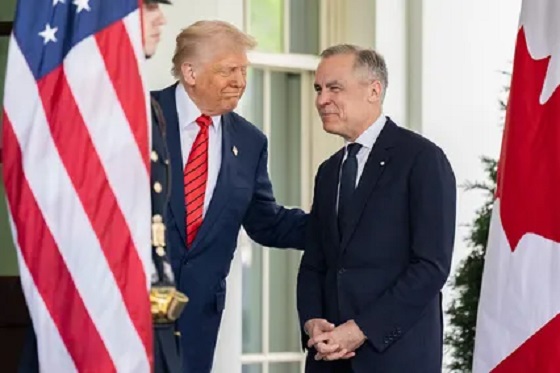
Quick Hit:
President Trump on Thursday confirmed a sweeping new 35% tariff on Canadian imports starting August 1, citing Canada’s failure to curb fentanyl trafficking and retaliatory trade actions.
Key Details:
- In a letter to Canadian Prime Minister Mark Carney, Trump said the new 35% levy is in response to Canada’s “financial retaliation” and its inability to stop fentanyl from reaching the U.S.
- Trump emphasized that Canadian businesses that relocate manufacturing to the U.S. will be exempt and promised expedited approvals for such moves.
- The administration has already notified 23 countries of impending tariffs following the expiration of a 90-day negotiation window under Trump’s “Liberation Day” trade policy.
Diving Deeper:
President Trump escalated his tariff strategy on Thursday, formally announcing a 35% duty on all Canadian imports effective August 1. The move follows what Trump described as a breakdown in trade cooperation and a failure by Canada to address its role in the U.S. fentanyl crisis.
“It is a Great Honor for me to send you this letter in that it demonstrates the strength and commitment of our Trading Relationship,” Trump wrote to Prime Minister Mark Carney. He added that the tariff response comes after Canada “financially retaliated” against the U.S. rather than working to resolve the flow of fentanyl across the northern border.
Trump’s letter made clear the tariff will apply broadly, separate from any existing sector-specific levies, and included a warning that “goods transshipped to evade this higher Tariff will be subject to that higher Tariff.” The president also hinted that further retaliation from Canada could push rates even higher.
However, Trump left the door open for possible revisions. “If Canada works with me to stop the flow of Fentanyl, we will, perhaps, consider an adjustment to this letter,” he said, adding that tariffs “may be modified, upward or downward, depending on our relationship.”
Canadian companies that move operations to the U.S. would be exempt, Trump said, noting his administration “will do everything possible to get approvals quickly, professionally, and routinely — In other words, in a matter of weeks.”
The U.S. traded over $762 billion in goods with Canada in 2024, with a trade deficit of $63.3 billion, a figure Trump called a “major threat” to both the economy and national security.
Speaking with NBC News on Thursday, Trump suggested even broader tariff hikes are coming, floating the idea of a 15% or 20% blanket rate on all imports. “We’re just going to say all of the remaining countries are going to pay,” he told Meet the Press moderator Kristen Welker, adding that “the tariffs have been very well-received” and noting that the stock market had hit new highs that day.
The Canadian announcement is part of a broader global tariff rollout. In recent days, Trump has notified at least 23 countries of new levies and revealed a separate 50% tariff on copper imports.
“Not everybody has to get a letter,” Trump said when asked if other leaders would be formally notified. “You know that. We’re just setting our tariffs.”
Business
Trump slaps Brazil with tariffs over social media censorship
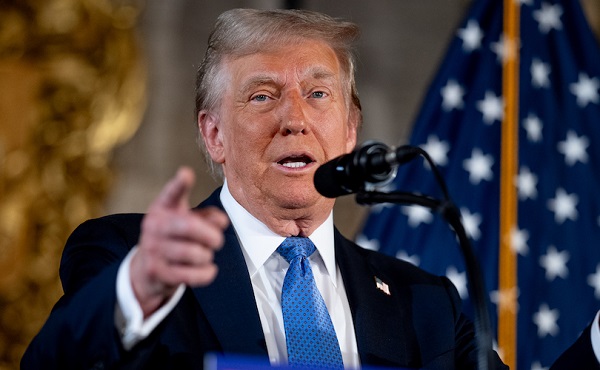
From LifeSiteNews
By Dan Frieth
In his letter dated July 9, 2025, addressed to President Luiz Inácio Lula da Silva, Trump ties new U.S. trade measures directly to Brazilian censorship.
U.S. President Donald Trump has launched a fierce rebuke of Brazil’s moves to silence American-run social media platforms, particularly Rumble and X.
In his letter dated July 9, 2025, addressed to President Luiz Inácio Lula da Silva, Trump ties new U.S. trade measures directly to Brazilian censorship.
He calls attention to “SECRET and UNLAWFUL Censorship Orders to U.S. Social Media platforms,” pointing out that Brazil’s Supreme Court has been “threatening them with Millions of Dollars in Fines and Eviction from the Brazilian Social Media market.”


Trump warns that these actions are “due in part to Brazil’s insidious attacks on Free Elections, and the fundamental Free Speech Rights of Americans,” and states: “starting on August 1, 2025, we will charge Brazil a Tariff of 50% on any and all Brazilian products sent into the United States, separate from all Sectoral Tariffs.” He also adds that “Goods transshipped to evade this 50% Tariff will be subject to that higher Tariff.”
Brazil’s crackdown has targeted Rumble after it refused to comply with orders to block the account of Allan dos Santos, a Brazilian streamer living in the United States.
On February 21, 2025, Justice Alexandre de Moraes ordered Rumble’s suspension for non‑compliance, saying it failed “to comply with court orders.”
Earlier, from August to October 2024, Moraes had similarly ordered a nationwide block on X.
The court directed ISPs to suspend access and imposed fines after the platform refused to designate a legal representative and remove certain accounts.
Elon Musk responded: “Free speech is the bedrock of democracy and an unelected pseudo‑judge in Brazil is destroying it for political purposes.”
By linking censorship actions, particularly those targeting Rumble and X, to U.S. trade policy, Trump’s letter asserts that Brazil’s judiciary has moved into the arena of foreign policy and economic consequences.
The tariffs, he makes clear, are meant, at least in part, as a response to Brazil’s suppression of American free speech.
Trump’s decision to impose tariffs on Brazil for censoring American platforms may also serve as a clear signal to the European Union, which is advancing similar regulatory efforts under the guise of “disinformation” and “online safety.”
With the EU’s Digital Services Act and proposed “hate speech” legislation expanding government authority over content moderation, American companies face mounting pressure to comply with vague and sweeping takedown demands.
By framing censorship as a violation of U.S. free speech rights and linking it to trade consequences, Trump is effectively warning that any foreign attempt to suppress American voices or platforms could trigger similar economic retaliation.
Reprinted with permission from Reclaim The Net.
-

 International2 days ago
International2 days agoSecret Service suspends six agents nearly a year after Trump assassination attempt
-

 Bruce Dowbiggin1 day ago
Bruce Dowbiggin1 day agoThe Covid 19 Disaster: When Do We Get The Apologies?
-
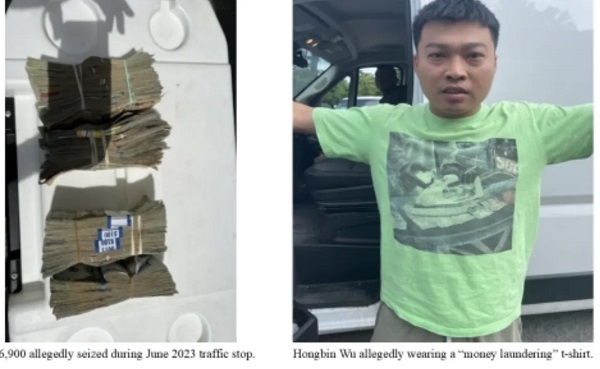
 Crime21 hours ago
Crime21 hours agoSweeping Boston Indictment Points to Vast Chinese Narco-Smuggling and Illegal Alien Labor Plot via Mexican Border
-

 Alberta1 day ago
Alberta1 day agoAlberta school boards required to meet new standards for school library materials with regard to sexual content
-

 Business2 days ago
Business2 days agoWEF-linked Linda Yaccarino to step down as CEO of X
-
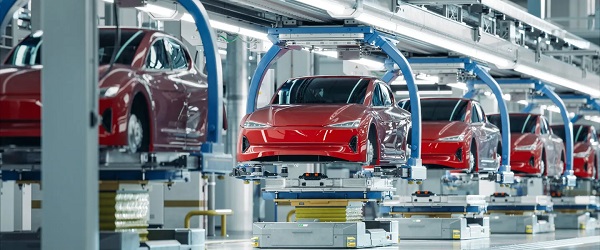
 Automotive2 days ago
Automotive2 days agoAmerica’s EV Industry Must Now Compete On A Level Playing Field
-

 Environment22 hours ago
Environment22 hours agoEPA releases report on chemtrails, climate manipulation
-

 Business2 days ago
Business2 days ago‘Experts’ Warned Free Markets Would Ruin Argentina — Looks Like They Were Dead Wrong

